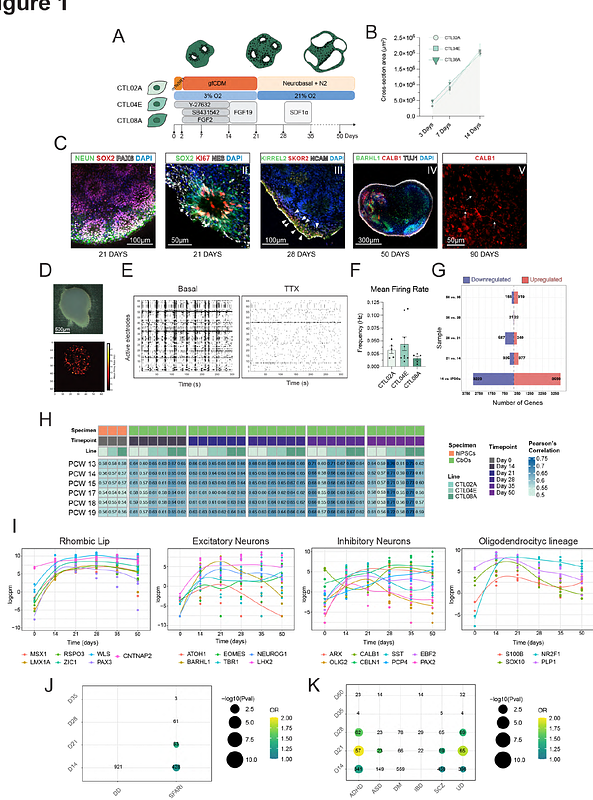Benchmarking cerebellar organoids to model autism spectrum disorder and human brain evolution

Benchmarking cerebellar organoids to model autism spectrum disorder and human brain evolution
Aprile, D.; Leonardi, O.; Petrella, A.; Castaldi, D.; Culotta, L.; Cheroni, C.; Valente, A.; Bonfanti, M.; Vitriolo, A.; Moriano, J.; Mirabella, F.; Tintori, A.; Boeckx, C.; Testa, G.
AbstractWhile cortical organoids have been used to model different facets of neurodevelopmental conditions and human brain evolution, cerebellar organoids have not yet featured so prominently in the same context, despite increasing evidence of this brain regions importance for cognition and behavior. Here, we provide a longitudinal characterization of cerebellar organoids benchmarked against human fetal data and identify at very early stages of development a significant number of dynamically expressed genes relevant for neurodevelopmental conditions such as autism and attention deficit hyperactivity disorders. Then, we model an ASD mutation impacting CHD8, showing both granule cell and oligodendrocyte lineages prominently affected, resulting in altered network activity in more mature organoids. Lastly, using CRISPR/Cas9 editing, we also model an evolution-relevant mutation in a regulatory region of the CADPS2 gene. We investigate the effect of such ancestral allele exclusively carried by archaic hominis, identifying a rerouting of the CADPS2-expression in rhombic lip cells, coupled with a different sensitivity to hypoxia which in turn lead to a differential timing of granule cell differentiation.